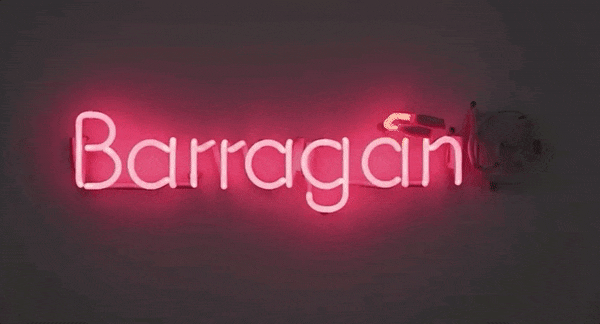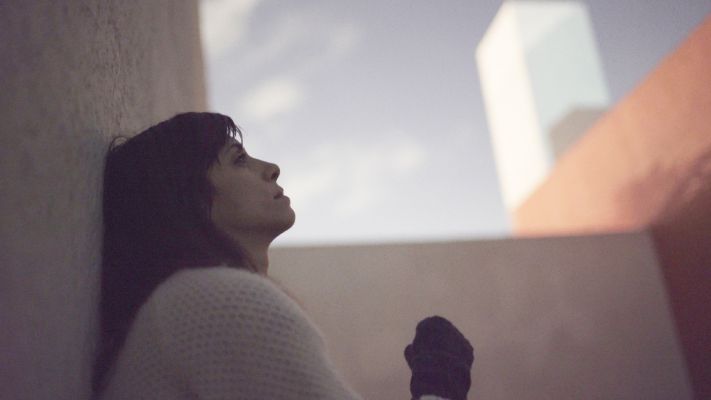Doc Corner: Dancing About Architecture in 'The Proposal'
 Wednesday, May 29, 2019 at 2:01PM
Wednesday, May 29, 2019 at 2:01PM By Glenn Dunks
 There is an architectural quality to Jill Magid’s debut feature. Appropriate since it is about architect Luis Barragán. Not that that has stopped bio-docs about artists before lacking an ounce of artistry, but Magid has transferred her talents over well to the cinematic artform; among all of the wonderful things that The Proposal has going for it, it’s one of the most beautiful documentaries of the year.
There is an architectural quality to Jill Magid’s debut feature. Appropriate since it is about architect Luis Barragán. Not that that has stopped bio-docs about artists before lacking an ounce of artistry, but Magid has transferred her talents over well to the cinematic artform; among all of the wonderful things that The Proposal has going for it, it’s one of the most beautiful documentaries of the year.
This is hardly surprising given cinematographer Jarred Alterman is one of the most exciting names in the field and whose work on Bisbee ’17 and Contemporary Color were among those films’ most valuable assets.

Barragán, who died in 1988, remains Mexico’s most celebrated and acclaimed architect and with this film it is not hard to see why. “The artist among architects”, he was called. From its opening frames as the camera glides past Barragán’s ‘Torres de Satélite’ on the Mexico City motorway, his work is quite clearly seen as striking and of immediate impact thanks to his use of shapes and bright block colours, making particularly effective use of shadow and reflecting the Mexican culture. This work in particular, an oasis of sorts amid the strangling smog from automobiles reflects the man’s work in general that are often sleek and timeless within whatever landscape they rise up out of.
Magid, herself an artist known primarily for conceptual installations and writing, and Alterman use the frame to adapt themselves to their subject’s vision. The Proposal is so elegantly composed, capturing Barragán’s work with an appropriate level of wonder and grace. But her film isn’t just about architecture, buildings and light. No, rather it is a filmed declaration from a Mexican artist for the return of another’s to its rightful home.
You see, Barragán’s work was moved after his death into the hands of The Barragan Foundation (the accent is missing for a reason, giving way to its own slice of art seen above), a secretive organisation based in Birsfelden, Switzerland. This includes models and sketches by the man himself as well as photography of his process and completed work by Armando Salas Portugal. According to the man’s Wikipedia page, this organisation’s goal is to “spread the knowledge on Luis Barragán’s cultural legacy by means of preserving and studying his archives and related historical forces”, but as Magid diligently points out, in doing so they have hidden his work away deep in the Alps where nobody can look at it.

Throughout The Proposal, Magid – who’s not exactly small change on the art scene – makes multiple attempts to bear witness to the archive. She writes formal requests to the foundation and to its director and historian, Federica Zanco, who emerges as the film’s shadowy pseudo-villain; a woman so obsessed with the work of Barragán that she has all but forbidden anybody else in the world from seeing it. Magid and Zanco form something of a guarded friendship through written correspondence, narrated by the filmmaker herself, sharing pleasantries and celebrations although not enough to gain access to the archive. Her biggest gamble is one truly outrageous plot that is too crazy to spoil if you're not already aware (I was not), but needless to say that as last-ditch efforts to bring the man’s work home where it can be appreciated by his fellow countrymen go, it’s a doozy. All of which culminates in a sequence of confrontation between the pair that is voyeuristic and remarkably edge-of-your-seat thrilling all things considered.
I was initially somewhat confused about what in The Proposal enticed the team at Field at Vision, the online digital journalism outfit from co-creator and Oscar-winning director of Citizenfour, Laura Poitras. But as Magid’s narrative unfolds, it becomes clear that there is much more going on here than an artist wanting to tell the story of an idol. Themes of colonialization loom large as Magid struggles to understand the logic behind the white Europeans keeping the work of a Mexican icon in a vault. It also wrestles with the very concept of who art ‘belongs’ to, at least after the artist’s death. Does it belong to the people it was made for or those rich enough to purchase it? Similar themes were explored in last year’s The Price of Everything, but did so far less successfully.
This is a documentary that goes under the radar for much of its runtime, largely unconcerned as Magid is with flamboyance or grandiosity. But it slowly weaves a spell, splicing a much-needed historical interrogation of Barragán’s work with that of its makers mission to bring it home to its cultural roots. I have no knowledge of whether Jill Magid intends to make more films in the future – The Proposal is, after all, an extension of her own gallery installation of the same name that sought to woo Zonca to her side of the aisle – but with this debut she proves she is a filmmaker with a keen eye for the cinematic in a way that only not all do.
Release: Currently in limited release through Oscilloscope.
Oscar chances: A dark horse, but they may be more receptive to it than the usual artist bio. Does Magid's lack of history or future in documentary play against its chances? Perhaps.
 Doc Corner,
Doc Corner,  Review,
Review,  documentaries
documentaries 


Reader Comments (3)
Yay! You’re back!
Thank God. What the fuck?
Yay hurray - felt scray - wanted to look up C. Therons filmbitch ranking after I saw "Tully" for the first time (what a ride !!!! she's so brilliant) ... and you were goooooone :-0